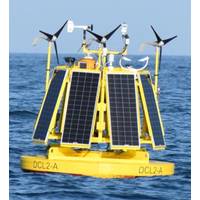
Woods Hole Group Unveils DeepCLiDAR Buoys
environmental services to support future offshore wind projects in the region.Developed in partnership with the University of Maine, the DeepCLiDAR system has undergone extensive design, integration, and testing by Woods Hole Group’s engineers and scientists in Bourne, MA.The buoy has achieved Carbon Trust Stage 2 validation at the Woods Hole Oceanographic Institution’s Air-Sea Interaction Tower off Martha’s Vineyard, receiving independent accreditation from DNV.
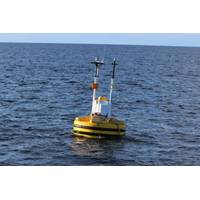
Fugro to Collect Metocean Data for Ørsted’s Offshore Wind Farms in Australia
delivery of the turnkey solution, which also includes equipment supply, installation, operations and maintenance.SEAWATCH Wind Lidar Buoy captures high accuracy measurements of wind speed and direction up to 300 meters above sea level. The system was the first to gain a Stage 3 rating in line with the Carbon Trust roadmap for the commercial acceptance of floating lidar technology. This certifies its suitability as a source of wind speed data for investment decisions for offshore wind farm development.“This is a key step in getting our Gippsland project development well and truly underway. By developing
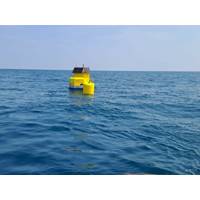
BlueFloat Energy Deploys LiDAR for 1GW Floating Offshore Wind Project in Taiwan
, including wind, wave, and current, to inform the floater and mooring system design as well as to refine the wind resource assessment.This floating LiDAR system is the Akrocean WINDSEA Stage 2, which has achieved the stage 2 of the offshore wind accelerator roadmap according to the criteria defined by Carbon Trust in the UK.Michael Pinkerton, Country Manager of BlueFloat Energy Taiwan, said: “We are pleased to collaborate with Akrocean, a top service provider in marine meteorological data services, to gather the necessary metocean data for the development of our Winds of September project through
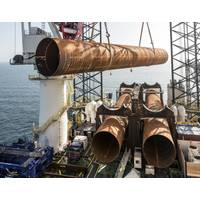
Offshore Wind Research Project Aims to Deploy Monopiles in Deeper Waters
A new research project, launched this week today, aims to extend the use of offshore wind monopile foundations, to support larger turbines in deeper waters, global climate consultancy the Carbon Trust has informed."Monopiles are the cheapest and most widespread offshore wind turbine foundation, however, they experience structural issues as their length and the weight they bear increases. Currently, this creates weight and water depth limits. The Offshore Wind Accelerator (OWA), led by the Carbon Trust, is hoping to find a solution, through a new project called Support Structure Damping," the

FOW Players Target 132kV Dynamic Cables
, with 20MW turbines even being discussed. These sizes out a strain on use of even the latest 66kV capacity cables, as it reduces the number of turbines per “string” of cable that can be connected – meaning that vastly more cable has to be used.Robert Keast, program manager at the Carbon Trust, told the joint RenewableUK and Global Underwater Hub Cables conference today that, with today’s 66kV cables, around ten 8MW turbines can be connected via one string. But that falls to just four to five for upwards of 20MW turbines, meaning a lot more cable has to be used (i.e. separate
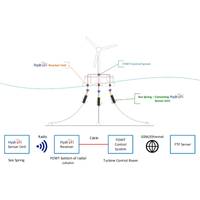
Floating Wind: New Mooring Line Monitoring Tech Passes the Test
system to generate power for the CSignum wireless monitoring system. The tests, involving the TfI Sea Spring and CSignum HydroFi technology, took place under simulated real-world load conditions at Exeter University’s DMaC test rig. Funded by the Scottish Government and managed through the Carbon Trust’s Floating Wind Joint Industry Project (FLW JIP), the FLW TAC awarded enabled CSignum and TfI Marine to manufacture and test their prototype solution to overcome the challenges of monitoring and inspection of mooring lines which have negatively impacted the commercialization of floating
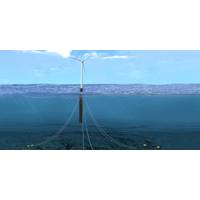
Fugro, Partners Design Mooring Line Fatigue Tracker for Floating Wind Turbines
Scottish Government.The consortium won the funding to develop the tracker, which fuses the motion and position measurements of floating hulls with a simulation model to monitor fatigue, in March 2020 through the Floating Offshore Wind Technology Acceleration Competition (FLW TAC), which was run by the Carbon Trust’s Floating Wind Joint Industry Project.“Having already demonstrated the technology in a relevant environment, Fugro and partners are now identifying opportunities to work with floating wind developers on pre-commercial projects to trial the solution offshore,” Fugro said Monday
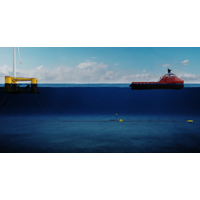
VIDEO: Vryhof's Mooring Solution Eliminates Need for Winches
, the solution - recently featured in Offshore Engineer Magazine - promises to cut cost and improve safety.Earlier this year, Stevadjuster was one of eight technologies to receive Scottish Government funding and developer support as part of the Floating Wind Technology Acceleration Competition run by the Carbon Trust's Floating Wind Joint Industry Project.CarbonTrust described the tech as an adjustable lock on the seabed used to manipulate the tension of the mooring lines, and an alternative to a winch sitting on the turbine platform, enabling vessels to adjust the tension of mooring lines at a safe
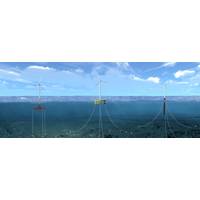
AS Mosley, Fugro Get Funding for FOWT Tech
Aberdeenshire-based offshore simulation and analysis company, AS Mosley, Dutch Fugro, together with Strathclyde University, have been awarded funding from The Carbon Trust, to develop new technology for monitoring Floating Offshore Wind Turbines (FOWT). As one of eight projects to benefit from a share of £1m from The Carbon Trust, the project will see the development of a highly efficient method for measuring fatigue and detecting anomalies in real-time for the renewable energy sector, AS Mosley said Monday.The system has the potential to vastly reduce operating costs by lowering –


 February 2025
February 2025





